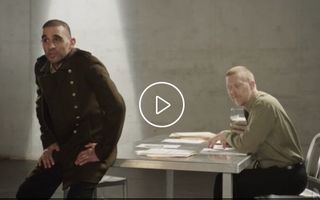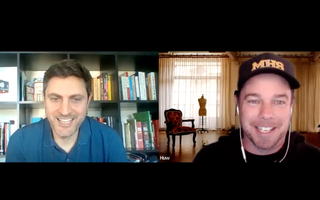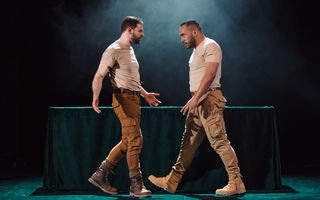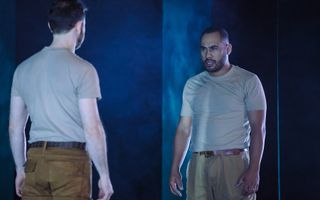 Watch
Watch
Actors often approach a scene for performance by thinking about what a character wants from the scene. In acting terminology this is called a character’s ‘objective’.
In Othello, Iago’s wants are quite clear – to destroy Othello and Cassio – and he informs the audience of this. The play’s plot is driven by Iago’s attempts to persuade others to adopt the action or point of view that he desires. But how does he achieve this? In acting, different types of persuasive techniques are called ‘actions’. So what actions does Iago use: does he flatter them, make them feel foolish, etc.
Preparation
Firstly, read the text and make a list of all the techniques or ‘actions’ that Iago uses.
In a small group, discuss the approaches that other characters might use to persuade someone to do what they wish them to do. Brainstorm a list of possibilities, e.g:
- flattery
- bullying
- inspiring guilt or a sense of obligation
- offering a reward
- presenting evidence in either a rational or highly emotive manner
Improvisation
Next, two members of the group improvise a scene in which a character seeks to persuade another to a particular course of action or way of thinking.
For example, to get someone to give you their lunch, to convince someone to do a speech even though they are nervous.
The other group members should take notes on the types of techniques or ‘actions’ that are used. Then swap so the other pair can have a go at the improvisation with a different scenario.
Activity
In your group, choose from one of the following scenarios that are similar to the events of Othello:
- A person is attempting to persuade a friend and colleague that they should break up with their partner, as they think they may be unfaithful.
- A person is attempting to gain a promotion after they have already been told their first application was unsuccessful.
- A person is attempting to persuade their current partner that they should trust them even though their partner is extremely jealous.
- A woman is trying to convince her friend that she would commit a crime in order to be rich.
As a group, choose one scenario. Improvise the scenario using different actions to achieve the objective. The pair watching should direct, and offer different tactics for the performers to try and take notes. Swap and have the other group members try the same scenario. Compare the two improvisations: which approaches tend to be the most effective? Why do they work for that particular scenario?






